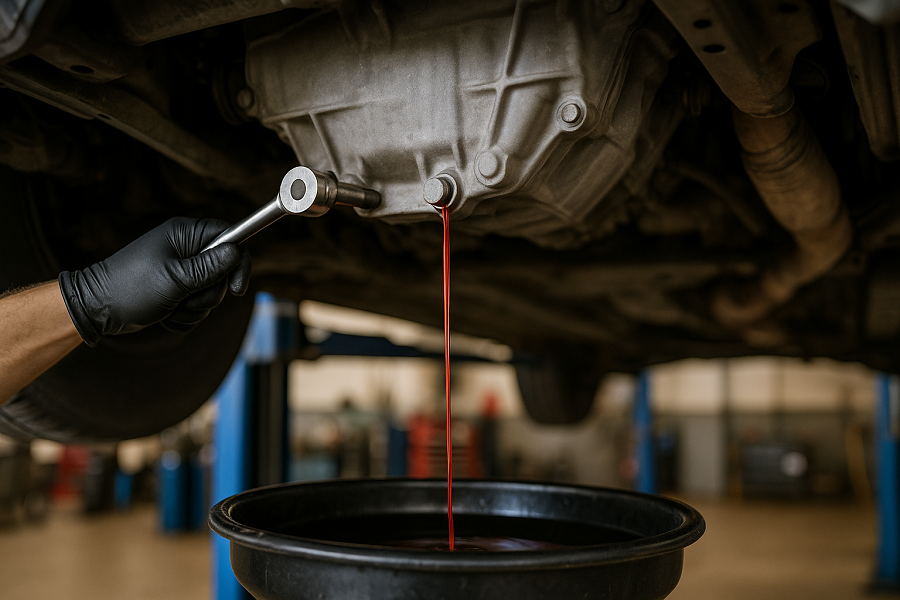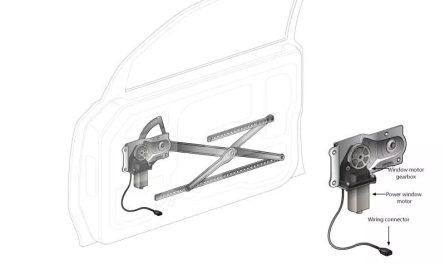1. Introduction
Regularly changing your Transmission Fluid is crucial for maintaining your vehicle’s performance and longevity. Over time, this fluid can degrade, leading to issues like slipping gears, delayed shifting, or even transmission failure. Whether you drive a manual or automatic vehicle, understanding when and how to change your transmission fluid can save you from costly repairs down the road.
2. What Is Transmission Fluid and Why Is It Important?
Transmission fluid serves multiple purposes: it lubricates moving parts, cools the transmission, and ensures smooth gear shifts. In automatic transmissions, it also acts as a hydraulic fluid, facilitating gear changes. Without proper maintenance, degraded fluid can lead to rough shifting, increased friction, and overheating, ultimately compromising your transmission’s health.
3. Signs You Need to Change Your Transmission Fluid
Recognizing the symptoms of old or contaminated transmission fluid can prevent major issues:
- Difficulty Shifting Gears: Hesitation or resistance when changing gears.
- Slipping Gears: Unexpected gear shifts or the transmission slipping out of gear.
- Strange Noises: Grinding or whining sounds during gear changes.
- Delayed Acceleration: A lag between pressing the accelerator and the vehicle responding.
- Transmission Overheating: Unusual heat emanating from the transmission area.
4. How to Check Transmission Fluid
Regular checks can help monitor fluid condition:
- Warm Up the Engine: Drive for a few minutes to reach operating temperature.
- Park on Level Ground: Ensure the vehicle is on a flat surface.
- Locate the Dipstick: Typically found near the engine bay; consult your owner’s manual.
- Check Fluid Level and Color: Healthy fluid is usually bright red and clear. Dark or burnt-smelling fluid indicates it’s time for a change.
5. How Often Should You Change Transmission Fluid?
The frequency depends on your vehicle and driving conditions:
- Manual Transmissions: Generally every 30,000 to 60,000 miles.
- Automatic Transmissions: Between 60,000 to 100,000 miles, though some manufacturers suggest longer intervals.
Always refer to your owner’s manual for specific recommendations.
6. Transmission Fluid Change vs. Flush
Understanding the difference helps in making informed decisions:
- Fluid Change: Drains about 30-50% of the old fluid, replacing it with new fluid.
- Fluid Flush: Replaces nearly all the old fluid using specialized equipment.
While a flush offers a more comprehensive replacement, it’s essential to ensure it’s suitable for your vehicle to avoid potential issues.

7. DIY Transmission Fluid Change: Step-by-Step
For those inclined to handle maintenance themselves:
- Gather Tools: Wrench set, drain pan, new transmission fluid, funnel, and gloves.
- Warm Up the Vehicle: Ensures fluid drains smoothly.
- Elevate the Car: Use jack stands for safety.
- Drain Old Fluid: Remove the drain plug and let the fluid empty into the pan.
- Replace Filter (if applicable): Some models have a replaceable filter.
- Refill with New Fluid: Use a funnel to add the recommended type and amount.
- Check Levels: Start the engine and shift through gears, then recheck fluid levels.
8. Transmission Fluid Change Cost: What to Expect
Costs can vary based on several factors:
- DIY Approach: Approximately $50 to $75 for fluid and supplies.
- Professional Service: Ranges from $150 to $300, depending on the vehicle and service center.
Remember, regular maintenance is more cost-effective than major repairs.
9. Transmission Fluid Change Tips and Best Practices
- Use Manufacturer-Recommended Fluid: Ensures compatibility and optimal performance.
- Avoid Mixing Fluids: Different types can have incompatible additives.
- Monitor for Leaks: Regularly check under your vehicle for any signs of leakage.
- Stay Consistent: Regular changes prevent buildup of contaminants.
10. Frequently Asked Questions (FAQs)
Q: Can I use any transmission fluid for my car?
A: No, always use the type specified in your owner’s manual to ensure proper function.
Q: What happens if I don’t change my transmission fluid?
A: Neglecting changes can lead to degraded fluid, causing overheating, gear slippage, and potential transmission failure.
Q: Is a transmission flush better than a change?
A: It depends on your vehicle and its condition. Consult with a trusted mechanic to determine the best option.
11. Final Thoughts and Pro Tips
Regular transmission fluid changes are a vital part of vehicle maintenance. They ensure smooth gear shifts, prevent overheating, and extend the life of your transmission. Whether you choose to DIY or seek professional help, staying proactive can save you from costly repairs and keep your vehicle running efficiently.


